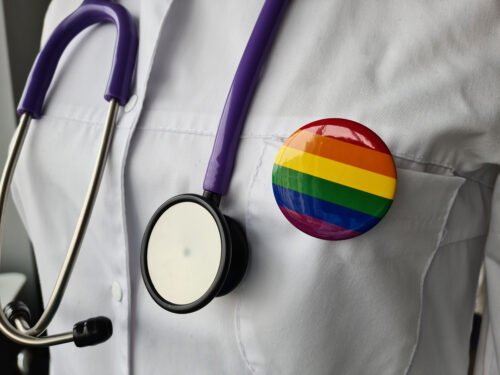No matter whom they serve, all clinicians should be well-versed in caring for vulnerable populations, including those within the LGBTQIA+ community. As more patients begin identifying as non-binary or gender nonconforming, it’s vital for clinicians to educate themselves on the appropriate care of this population.
Boundaries to care
As with all groups, the LGBTQIA+ community is made up of individuals from a variety of racial and ethnic backgrounds, cultures, incomes, and religions. While many individuals share experiences of stigma and discrimination, each person’s journey looks different.
When clinicians make assumptions — whether consciously or unconsciously — about their transgender patients, they risk enforcing negative stereotypes and possibly retraumatizing their patient.
Related: Transgender Patient Essential Care: Making Healthcare Trans-parent
Respectful, affirming, competent
In caring for transgender, non-binary, or gender nonconforming patients, three principles are key: respect, affirmation, and competence. For example, greeting a patient by their preferred or chosen name and pronouns is an immediate sign of respect and affirmation.
Conversely, misgendering a patient can foster distrust, making continued communication difficult. “The patient’s name and pronouns are a big deal,” says Tony Ferraiolo, certified life coach and mindfulness teacher, who has been working with transgender youth and non-binary youths for more than a decade. “You will lose the patient emotionally if they check in at the front desk and are mis-gendered.”
Does that mean there’s no room for an honest mistake? Certainly not. Himself a trans man, Ferraiolo explains the importance of honoring patients even in the midst of mistakes.
“You’re human; mistakes will happen. What we’ve found over the years is that when you apologize to a trans or nonbinary or gender nonconforming patient (for misgendering them), you’re putting that patient in the position of having to approve you, when in fact it’s not about you. But if you thank them for correcting you now, your patient feels seen, heard and empowered.”
Helpful starting questions
Leaving assumptions at the door, clinicians can show care for their patients beyond correct names and pronouns by opening an appointment with a few simple questions, such as:
“What does your gender journey look like?”
“What do you feel you need to be healthy and happy?”
“Can you share with me what language you prefer that I use to describe parts of your body?”
“[The key] is to make everybody feel comfortable,” says Ferraiolo. “You have to ask a trans or nonbinary person: ‘I want to make this exam as comfortable as possible for you, but I want to use the right language. Can you share with me what language you use in your body?’”
Related: Expanding the Rainbow: Understanding the Needs of the LGBTQIA Patient
Training and resources
Healthcare professionals seeking ways to better care for their LGBTQIA+ patients are not alone. The National LGBTQIA+ Health Education Center has published suggestions for improving healthcare environments for LGBTQIA+ patients, including:
- Posting a nondiscrimination policy, signed by the staff, in plain view of patients. A nondiscrimination policy helps ensure commitment to an environment in which all people are valued and respected. It also provides an opportunity for staff members to examine their own beliefs and assumptions about race, age, sex, gender, and marital relationships.
- Provide an area to display local LGBTQIA+ resource information. This area can include information on local counseling options, food pantries, support groups, as well as general information on a specific practice location.
- Using an intake form that allows a patient to provide personal information in a nonjudgmental manner. The inclusion of domestic partnership under the “relationship status” section of a history form, as well as options for transgender individuals may help patients feel more comfortable sharing this information.
- Providing more inclusive options for screening questions. This might look like open-ended questions and terms like “partner” rather than “spouse.”
Local pride centers are also excellent informational hubs for healthcare professionals and patients. “Your local centers are filled with medical resources,” says Ferraiolo. “They’ll have social resources and behavioral health resources.”






